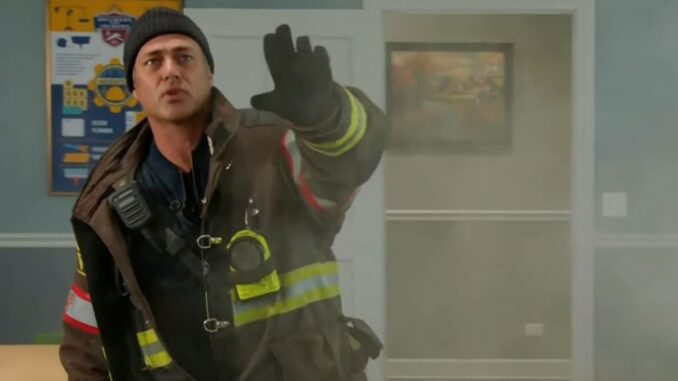
Realism is often sacrificed for drama in TV shows, and Chicago Fire is no exception. However, for real-life firefighter Anthony Martinez, one scene in season 3, episode 5 went too far, leaving him “furious” due to inaccuracies in how a roof rope rescue was portrayed.
NBC’s One Chicago franchise has built its reputation on showcasing dramatic, heroic rescues by Firehouse 51, often blending intense action with emotional moments. While the series captures the essence of firefighting, it occasionally misrepresents techniques, as highlighted by Martinez in an episode of Insider’s How Real Is It? on YouTube.
The Scene That Missed the Mark
Martinez explained his frustrations, focusing on the improper way the rescue team secured the rope and handled trouble during the mission. While the sequence overall earned a respectable 7/10 for accuracy, some critical errors stood out to him.
“I was actually very furious with this clip,” Martinez shared. “We drill on roof rope rescues a lot in my department. So, when I saw him put the ax in and use the rope around a vent pipe, that’s a big no-no because that’s not substantial enough to hold the weight.”
He elaborated that real-life protocol prioritizes securing the rope to something stable, such as a bulkhead or, if necessary, cutting into the roof to tie off on its structural framework. Martinez also noted the missed opportunity to use the portable saw visible in the scene, which could have provided a safer solution.
The scene’s depiction of breaking tempered glass also drew his critique. While the shattered glass added dramatic flair, he explained that such explosions are rare due to the strength of tempered glass. On the positive side, Martinez acknowledged the realism of characters instinctively looking down after hearing glass shatter—a standard safety practice in firefighting.
Other Realistic Yet Problematic Details
The firefighter praised the advice given in the scene about cutting the cable to loosen it from the mechanism, but he pointed out some risky actions. For example, the character in the scene lifted themselves off the rope twice, which he identified as a major hazard. Removing weight from the rope can loosen its hook or anchor point, increasing the risk of a fall.
Despite these errors, Martinez commended the general techniques shown, which captured the essence of a roof rope rescue. However, he emphasized that improving these small details could elevate the scene’s credibility without sacrificing its dramatic impact.

Why Chicago Fire Trades Realism for Drama
Martinez’s critique highlights a recurring theme in Chicago Fire: its firefighting sequences are dramatized for maximum audience engagement. While the show often incorporates real-life techniques, its primary focus remains on character development and emotional storytelling.
The scene in question, like many others, demonstrates the balance between crafting edge-of-your-seat action and staying true to reality. For fans without a firefighting background, these dramatizations may seem authentic, but they can paint a misleading picture of real-life firefighting practices.
This isn’t unique to Chicago Fire. Many procedural dramas take creative liberties to heighten suspense, even if it means bending the rules of realism. However, as Martinez’s feedback shows, there’s room for improvement, especially when the inaccuracies involve critical safety protocols.
Moving Forward: Realism vs. Drama
As Chicago Fire enters its 13th season, it’s likely that the trend of prioritizing drama over realism will continue. However, feedback from professionals like Martinez offers the showrunners an opportunity to refine their depictions without losing the emotional intensity that draws viewers in.
While firefighting purists may still spot inaccuracies, the show’s commitment to its characters and high-stakes narratives remains its core strength. Whether or not Chicago Fire takes steps to address these critiques, it’s clear the drama will keep delivering heart-pounding moments—even if they don’t always reflect real life.
